Entry Type: Event
Hot Springs Shootout
aka: Hot Springs Gunfight
aka: Gunfight at Hot Springs
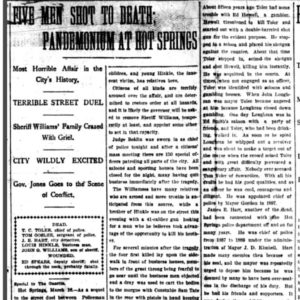 Hot Springs Shootout Article
Hot Springs Shootout Article
Hot Springs Smallpox Outbreak of 1895
 Hotels Imploded
Hotels Imploded
 Houpts
Houpts
Housley v. State
Howard County Race Riot of 1883
aka: Hempstead County Race Riot of 1883
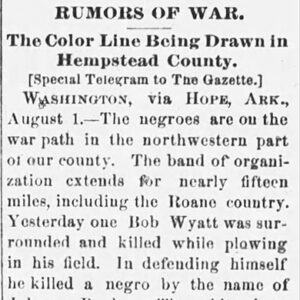 Howard County Race Riot Article
Howard County Race Riot Article
Howard County Reported Lynching of 1894
 Jesse Howard Lynching Article
Jesse Howard Lynching Article
Howard, Jesse (Lynching of)
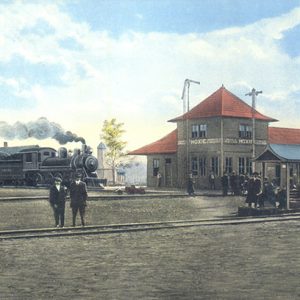 Hoxie Depot
Hoxie Depot
Hoxie Schools, Desegregation of
Huey, Cal (Execution of)
 Hughes Flood
Hughes Flood
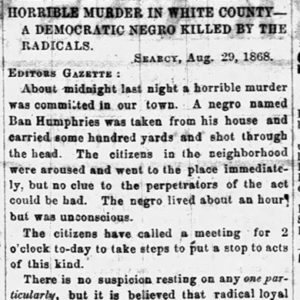 Ban Humphries Murder Letter
Ban Humphries Murder Letter
Humphries, Ban, and Albert H. Parker (Murders of)
Hunley, Dan (Lynching of)
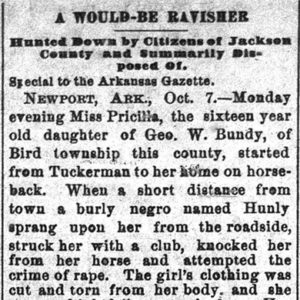 Hunley Lynching Article
Hunley Lynching Article
Hunter-Dunbar Expedition
aka: Dunbar-Hunter Expedition
Hunter, Buck (Lynching of)
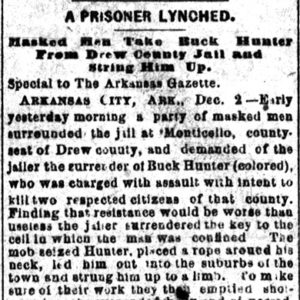 Buck Hunter Lynching Article
Buck Hunter Lynching Article
Hunter, William (Lynching of)
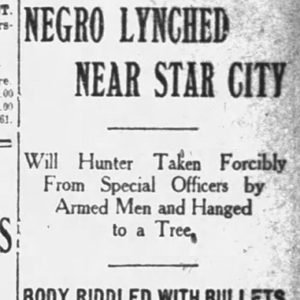 William Hunter Lynching Article
William Hunter Lynching Article
Huntersville and Clinton, Scouts from
Huntersville, Skirmish at
Huntsville Massacre
Hurricane Creek, Skirmish at
aka: Skirmish at Hunter's Crossing
Hurricane Katrina/Rita Evacuees
 Asa Hutchinson at CSA Arrest
Asa Hutchinson at CSA Arrest
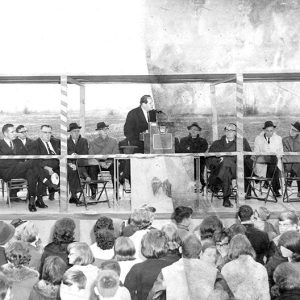 I-40 Dedication
I-40 Dedication
Impson, McClish (Execution of)
 Independence County Fair
Independence County Fair
Indian Removal
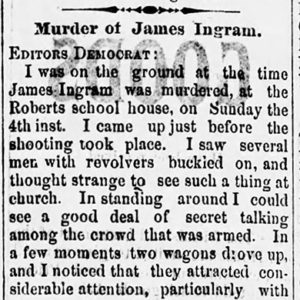 James Ingram Murder Article
James Ingram Murder Article
Ives, Kevin, and Don Henry (Murder of)
Izard County Tornado of 1883
J. S. McCune [Steamboat]
aka: Brilliant (Steamboat)
aka: USS Brilliant (Tinclad Gunboat)
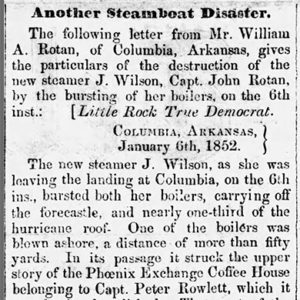 J. Wilson Steamboat Article
J. Wilson Steamboat Article
 Jackson County Lynching
Jackson County Lynching
Jackson v. Hobbs
Jackson, Boge (Execution of)
Jackson, Goodwin (Execution of)
Jackson, Henry (Lynching of)
 Henry Jackson Lynching Article
Henry Jackson Lynching Article




